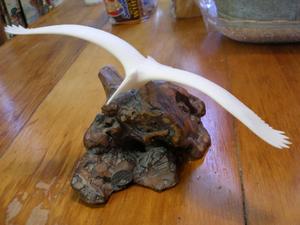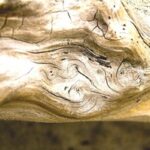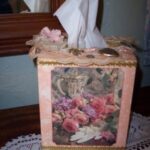Chances are, you’ve seen a John Perry sculpture some time in your life. They are hard to miss with their clever use of polished wood, white sea life figural adornments, and John Perry signature finial. But few who have seen the work of John Perry really know what it is they are seeing other than the usual bone white animals created in the 1970’s hovering over the driftwood. John Perry is more than a mod artist, and the latest news from the John Perry Studio is one in living color.
In 1972, sculptor John Perry was like most artists. His brain was full of ideas, but the dream needed a push to make it real. Perry was born in England during the onset of World War II. He moved throughout the country during his childhood and studied Geology in Nottingham University. After obtaining his degree, John Perry had a change in career goals and found himself pursuing business administration certification.
According to Perry, it was his emigration to the United States which led to his career as a sculptor, as he used the skill to survive in 1967’s ever-changing America, using sculpture skills honed during periods of childhood bed rest due to a bone disease. The first John Perry sculptures were made of fiberglass and not typically of a sea life theme. But Perry hit both pay dirt and notoriety when he began creating gull sculptures for California’s costal galleries.
At about the same time that John Perry was sculpting his first sea birds for gallery sales, a writer, Richard Bach, had become a literary sensation with his book Jonathan Livingston Seagull. The book’s popularity was widespread among US College campuses and among the 70’s dreamers and had inspiringly climbed to the top of the New York Times bestseller list. Many consider that it actually flew. It is told in fable; the story of a seagull who loves to fly and must choose between common life and an alternative one. This book inspired a film of the same name, a ballet, and a vinyl record narrated by late actor Richard Harris, widely recognized as the beloved Dumbledore of the first two Harry Potter movies.
But it is said that the beach inspired John Perry’s sculptures, not the book, and at first, Perry was surprised that his seagull sculptures were such hot sellers. When one gallery owner explained to Perry the relationship with the book, he decided to take his work to the next step: mass production. Though John Perry was reluctant at first to capitalize on the popularity of Jonathan Livingston Seagull, he decided to try his luck on mass producing sculptures specifically created for a retail purpose.
Though John Perry approached Mattel to sell his seagull design for mass production after discovering they had obtained merchandising rights to Jonathan Livingston Seagull, Mattel was disinterested, a pinnacle moment that might have resulted in Perry’s work never becoming available to the general public had they accepted his design. Eventually, John Perry found himself at the office of Vincent Lippe, a merchandise distributor, and unknown to Perry, one of the largest. A shocked Perry was surprised at Lippe’s request for a thousand gulls a week, something John Perry was unsure he could do. He learned the art of molding out of necessity, even developing his own medium, Pellucida to get the job done. (Pellucida is a type of resin that can be white in its natural form, polished or airbrushed.) Quickly, he went from just seagulls to other ocean life. With the addition of Bronze to his arsenal of mediums, John Perry became quite popular.
And what about the bases? Well, they are not exactly driftwood as one might assume. They are cleaned and polished root of the Manzanita bush. In the 70’s there was an abundance of these roots discarded by fire departments in Southern California in the creation of firebreaks. These roots would be graded, cut, waxed, and polished prior to the insertion of the sculpture mount. Currently, John Perry harvests his Manzanita root stock from a special ranch with a sustainable supply where the root is harvested in such a way that it does not damage the plant.
The John Perry Studio today is still one of the most exciting places to see animal sculptures, but Perry is no longer exclusively creating sea life, and now many John Perry sculptures are in living color. One of the most incredible-looking sculptures is his Penguin & Chick, but it is to be argued that the current line of John Perry frogs are probably some of the best looking amphibian sculptures available today. From Bohemian to businessman, John Perry is one of the most beloved sculptors from the 1970’s. Today, the once pop culture icon is still enjoying his craft while exploring new design concepts as well as traditional beloved ones.





